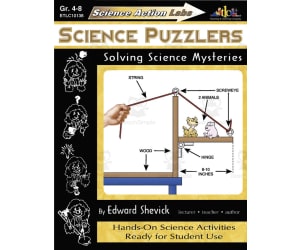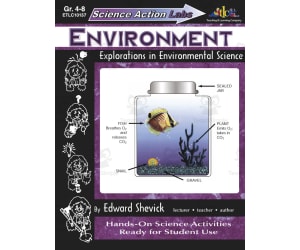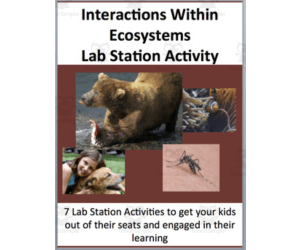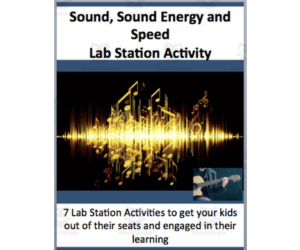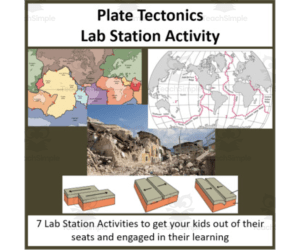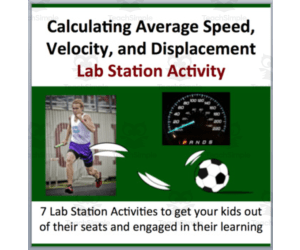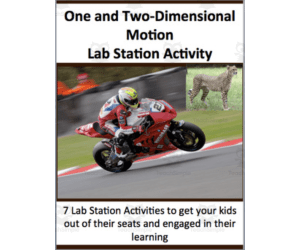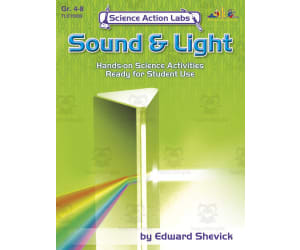3,307 products added recently
Holiday and Seasonal Experiments
Combine the joy of holidays with the wonder of science through seasonal experiments. This collection offers activities aligned with various celebrations, such as creating crystal ornaments, exploring thermal reactions on winter days, or making colorful eggs for spring. By integrating these holiday experiments into your classroom, you can make learning festive and fun.
Science Activities For Your PreK Classroom
, Preschool, Grade 1, 2, Activities, Experiments
You’re never too young to learn about Science! Includes these fun, easy-to-do craft projects: Giant Bubbles, Windy Day Fun, and Sink or Float?
Author Twin Sisters Digital Media
Tags Crafts, Science, Experiment, Activity, Classroom
Science Action Labs Science Puzzlers: Solving Science Mysteries
, Grade 4, 5, 6, 7, 8, Labs, Experiments, Activities
Discover the Excitement of Science with 'Science Action Labs Science Puzzlers: Solving Science Mysteries' This enthralling resource is perfect for students in grades 4 through 8 . It transcends traditional teaching methods to introduce exciting, hands-on labs that stimulate curiosity and critical thinking. Mysteries Awaiting Resolution With a new puzzle on every page to solve, young minds are exposed to a variety of scientific themes, including magnetism, gravity, balance and prediction-making. This comprehensive package contains 64 quick-print PDF pages , filled with unique science scenarios. This allows educators to easily tailor their teaching approaches according to student capabilities and interests. An Engaging Fusion of Fun and Learning! This amazing resource draws parallels between unraveling mystery plotlines like a seasoned detective while learning complex science concepts. All activities make use of simple household or classroom materials—perfect for group instruction or small group collaborations. Fosters open discussions about hypotheses Encourages sharing insights A Perfectly Flexible Resource for Modern Education Demands A key benefit of these labs is they cater well for solo explorers too! The puzzles function as excellent tasks not just inside the classroom but also outside it as engaging homework assignments. Homeschool Friendly! Educators directing homeschooling programs will find this resource extremely valuable. It brings scientific principles from textbooks into practical applications within our daily world – making scientific learning much more accessible! Note: All exercises promote student-led investigation leading toward direct observations followed by credible inference making - establishing a concrete base of understanding one concept at a time! A flexible teaching tool that adapts to diverse learners without compromising on the practical essence pivotal for grasping complex science concepts. An Invigorating Learning Experience With this comprehensive teaching tool, educators can not only teach, but also instill a love of learning – and there is no greater thrill than solving mysteries while learning!
Author Classroom Complete Press
Tags Science Lab, Action Lab, Science Puzzlers, Solving Mysteries, Activity
Let's Investigate! Hands-On Science - Grades 5-6
, Grade 5, 6, Activities, Experiments, Teacher Tools, Lesson Plans
Let's Investigate! Hands-On Science - Grades 5-6 Let's Investigate! Hands-On Science - Grades 5-6 takes students on a thrilling journey of scientific discovery. It offers educators an effective tool for stimulating curiosity and encouraging independent learning in the fields of physical science, earth science, and life science. The particular emphasis is on experiential learning made possible through engaging activities. About This Teaching Resource This teaching resource contains 64 pages filled with mind-stretching activities designed to foster exploration into the fascinating world of science. It presents an ideal blend of fun, simplicity, and education that makes even complex concepts easily digestible for fifth or sixth-grade students. The Activities: Easy yet Engaging! The interesting activities contained within this resource require minimal preparation time from educators yet yield maximum student engagement. Each assignment provides clear step-by-step instructions to allow for seamless classroom execution. Whether implemented in a whole group setting or smaller clusters, these hands-on experiments will stimulate young minds at varying levels of comprehension. Critical Thinking Skills: Let's Investigate! Hands-On Science studies significantly focus on developing critical thinking skills espeially needed in scientific explorations. Puzzling Questions: Guided questions accompanying each activity serve as pivotal challenges that cultivate the art of observation and reasoning among pupils. Facts Reinforcement: Captivating snippets of facts scattered throughout the book reinforce students' understanding while feeding their natural curiosity. "Extension Activities" : They lend further depth to their knowledge by prompting exploration beyond what's covered in class discussions. Extra Teacher Resources Included! To help educators navigate effortlessly through each experiment and secure better results with every endeavor at teaching scientifically-geared topics, this resource includes two invaluable assets: a comprehensive background information section and an insightful Activity Guide. Each aid is carefully crafted to provide teachers with data-rich content about relevant subject matter as well as beneficial tips to utilize exactly how you wish during lessons or even for homework assignments! In a Nutshell Available in handy PDF format ready-to-print format, Let's Investigate! Hands-On Science - Grades 5-6 stands as a versatile addition to any curriculum intended for fifth to sixth-grade science instruction. Whether you are a public school teacher or you educate at home, this resource ensures an enriching hands-on learning experience steeped in elements of fun, understanding and scientific wonder.
Author Classroom Complete Press
Tags Air Pressure Experiment , Tornado In A Bottle, Let's Investigate, Hands-on Science, Earth Science Experiments
Let's Investigate! Hands-On Science - Grades 1-2
, Grade 1, 2, Activities, Experiments, Teacher Tools, Lesson Plans
Let's Investigate! Hands-On Science - Grades 1-2 Let's Investigate! Hands-On Science - Grades 1-2 is a complete teaching aid packed with brain teasing activities aimed to introduce students to the mesmerizing world of science. Covering three main areas of science: physical, earth, and life sciences. A Comprehensive Teaching Toolbox This guide is designed as a comprehensive teaching toolbox filled with actionable activities geared towards fostering independent learning among students. Each activity encompasses an easy-to-follow set of instructions ensuring direct comprehension and engagement. These tasks are not merely focused on rote learning but also encourage observation skills and foster critical thinking development through guided questions. Beyond just Activities Rather than just presenting fun activities, this guide includes interesting facts throughout its contents adding another layer of enrichment to students' learning journey. Extension activities are also added providing more avenues for knowledge exploration beyond classroom discussions. List: Fascinating Science Facts Extension Activities An Activity Guide About the Activity Guide: The Activity Guide located towards the end offers useful background information along with tips that can be leveraged by educators to ensure an enjoyable yet valuable scientific exploration experience for their classes. Note: The Let's Investigate! Hands-On Science - Grades 1-2 package comes as a single PDF made up of 64 pages prepared in advance waiting to be printed whenever you need them – maximizing accessibility without sacrificing time-efficiency. Whether for whole-class instruction or small group teachings or even homework assignments – this highly adaptable tool Line by Teach Simple aims at empowering Grade 1 & Grade 2 learners in their curious journey into the realm of Science. Get started today, grab your digital copies and experience how physical sciences, earth sciences, or life science concepts can become incredibly tangible learning experiences for your students.
Author Classroom Complete Press
Tags Let's Investigate, Hands-on Science, Science Experiments, Fossil Fun, Underwater Test
Science Action Labs Water Science: Active Science with Water
, Grade 4, 5, 6, 7, 8, Labs, Experiments, Activities
Science Action Labs Water Science: Active Science with Water This enriching resource is designed primarily for students from grade 4 to grade 8 , studying general science. It provides a hands-on approach that allows students to actively participate in conducting experiments and investigating various aspects of water. This method cultivates a deeper understanding and appreciation for this integral part of our life and environment. The resource comes in a convenient PDF format, consisting of 64 print-ready pages packed with diverse activities. These activities are designed not only to be educational but also stimulating, fostering excitement as learners explore the following topics: Exploring water pressure Examining buoyancy and surface tension Investigating weather impacts on water The dynamic nature of these resources triggers interest in students while enhancing their critical thinking skills through problem-solving scenarios provided by the experiments. Beyond just Textbooks Theory....Active Learning Alternative! This covers fundamental aspects that stimulate student inquiry about everything related to Hydroscience from natural weather phenomena to physical properties like buoyancy, breaks free from conventional passive learning methodologies. No Significant Prep Work Required! An added benefit? The clear directions accompanying the activities ensure that minimal preparation is necessary on part of the teacher - an important advantage when juggling busy schedules! In conclusion, Educators seeking versatile resources that encourage experiential learning will value investments like Science Action Labs Water Science: Active Science with Water. Its versatility enhances your teaching strategy, ensuring productive exploration time during your assigned science periods while ensuring practical learner experiences they won't soon forget! .
Author Classroom Complete Press
Tags Ice Cube Science, Chemistry Of Water, Water Conservation, Purifying Polluted Water, Science Labs
Science Action Labs Electricity & Magnetism
Science, Physics, Grade 4, 5, 6, 7, 8, Labs, Experiments, Activities
Science Action Labs Electricity & Magnetism A comprehensive teaching resource tailor-made for educators working with 4th to 8th grade students. This resource transmutes theoretical knowledge of electricity and magnetism into hands-on experiences. Contents The teaching toolkit contains: 64 ready-to-print pages : Neatly organized in a single PDF format. Detailed experiments : Students will construct an electroscope, generate their own electricity, put various magnets to test, evaluate magnetic potency and much more. Educational Value Theoretical and practical components balanced: This makes it an excellent tool for cultivating scientific curiosity among young learners while strengthening their understanding about electricity and magnetism. Can be used flexibly in various scenarios to meet specific pedagogical needs whether opted for group work or individual assignments; in-class activities or as homework supplements. Promotes physics literacy: Hands-on nature of the activities engages learners directly in scientific exploration. Cultivate future scientists by demystifying complex theories through first-hand experiences! Harnessing such stimulating resources contributes significantly towards building solid foundations today which will help them understand Physics' intricate wonders tomorrow.
Author Classroom Complete Press
Tags Science Labs, Electricity, Magnetism, Electromagnet Lab, Building An Electroscope
Science Action Labs Environment: Explorations in Environmental Science
Science, Earth and Environmental Sciences, Environmental Science, Grade 4, 5, 6, 7, 8, Labs, Experiments, Activities
Science Action Labs Environment: Explorations in Environmental Science This comprehensive teaching resource is designed to bring science to life for Grade 4 to 8 students . The toolkit offers an interesting adventure into environmental science, provoking students to engage deeply with various scientific problems. Main Features: The resource primarily focuses on different scientific mysteries which can be applied in a variety of classroom settings. It can be used as part of whole-group instruction, in small study groups or even assigned as homework, opening doors for differentiated learning. Gives both teachers and students the freedom to experiment with a wide array of scientific concepts without feeling overwhelmed. Provides ample opportunities for promoting active learning through hands-on experience. Molding Young Minds: Students are encouraged to use their thinking abilities and problem-solving skills vastly while navigating through these intriguing scientific puzzles. It triggers interest about environmental science subjects via engaging labs thereby fostering deeper understanding amongst the youngsters. Syllabus Compatibility and Approachability: The toolkit contains 64 ready-to-print PDF pages packed with practical content making it align perfectly with core Environmental Science syllabus common at primary schools. Additionally, the easy-to-comprehend language used throughout this resource accommodates varying reading abilities present within those grades. Educational Impact This tool truly simplifies intricate ideas and facilitates children approach them at their own pace under guided supervision from educators. By integrating this aid into lesson planning - educators could considerably boost classroom discussions around logical reasoning all while effectively sparking intellectual growth among budding learners over time.' Lasting Influence: Habitual usage of this dynamic resource not only amplifies student engagement but also succeeds to instill critical-thinking skills crucial in developmental years leading up towards higher education—making education substantial and nourishing at every step.
Author Classroom Complete Press
Tags Environmental, Science, Action Labs, Explorations, Science Activity
Interactions within ecosystems – Lab Station Activity
Science, Life Sciences, Biology, Grade 7, 8, 9, 10, Labs, Experiments, Activities
Interactions within Ecosystems – Lab Station Activity This science lab station activity enables students to explore biotic and abiotic factors that interact within an ecosystem. Learners will investigate concepts like symbiosis, limiting factors, exponential population growth, and predator-prey dynamics. The engaging lab stations feature creative hands-on tasks, research questions, opinion writing, applicability readings, knowledge checks, and video analysis. Students use a passport worksheet to record answers as they rotate through the self-guided stations at their own pace. This content can be used for in-class ecosystem labs or as a review before exams. Two bonus vocabulary building activities are also included to engage students. This activity covers core ecology standards and requires almost no teacher prep. Simply print and distribute the cards. An answer key is provided for applicable stations.
Author Teach With Fergy
Tags Ecosystems, Symbiosis, Predator, Lab Station, Activity
Electricity Generation – Lab Station Activity
Science, Technology, Engineering, Grade 7, 8, 9, 10, Labs, Experiments, Activities
Educators seeking an engaging, hands-on resource to teach the principles of electricity generation will find the Electricity Generation - Lab Station Activity to be an invaluable teaching tool. This product is a fully editable lab station activity designed to actively engage students in learning about electricity production . This robust product offers seven distinct lab stations with unique and engaging activities. Students have opportunities at each station to test their understanding of different methods of electricity production—such as renewable and non-renewable sources, fossil fuels, nuclear power, wind energy, hydroelectric power and future technologies in interactive ways. The resource includes practically no-prep for educators - just print the cards and lay them out around the classroom! Bonus activities: An added advantage is bonus activities such as word scrambles and word searches related to the topic. These orchestrated interjections ensure there is no idle time between transitioning from one action-packed station activity to another! The toolkit can be used during laboratory sessions or serves well for review tasks prior tests or quizzes. This resource also promotes independent thinking skills by requiring students to research specific aspects relating to electricity generation on their own devices or a classroom computer at 'research' stations. It encourages expression as students write down opinions on questions surrounding how electricity gets produced. Designed for multi-modal learners from 7th-10th grade studying science with subtopics in engineering; this package can also be sent home as extensions/homework tasks after lessons end. Overall teachers will appreciate how effortlessly it blends learning assessment while ensuring student engagement! Note: An answer key is provided where applicable so educators can quickly and accurately grade student work and offer feedback on their learning progress. In summary, this unique collection of station activities facilitates a complete immersion into understanding electricity generation while ensuring students remain stimulated and engaged throughout their exploration. As they navigate through each station activity – either in small groups or individually – students strengthen their grasp over the subject matter.
Author Teach With Fergy
Tags Electricity Generation, Lab Station, Hands-on Learning, Renewable Energy, STEM Education
Sound, Sound Energy, and Speed – Lab Station Activity
Science, Physics, Grade 8, 9, 10, 11, Labs, Experiments, Activities
Product Overview: The product under consideration is the Sound, Sound Energy, and Speed – Lab Station Activity . This interactive teaching resource invites students to explore key scientific concepts around sound and energy in an engaging, hands-on way. Suitable for use with students in Grade 8 through to Grade 11, this learning tool aligns particularly well with physics coursework. Main Features: A core element of this lab station activity hinges on active participation. It requires learners to interact directly with the content materials available at each station—ranging from video clips to informative readings or related assignments/tasks. Rather than a one-size-fits-all approach, this resource considers varying student speeds and comprehensions by including intermittent rest stations where additional catch-up time can be spent on previous activities or preparing for upcoming ones. This product file is multi-format—a detail that allows seamless deployment in any classroom setup whether traditional school environment or homeschool setting—an advantage that greatly benefits today's varied educational contexts. Unique Attributes: Each unique station offers the chance for learners to deepen their understanding of topics like renewable energy sources or future technologies while simultaneously honing skills such as research techniques and opinion-forming. The lesson's adaptability shines with its included bonus activities- a word scramble for academically stronger groups or a word search for those needing simpler tasks. Another attribute that sets Sound, Sound Energy, and Speed – Lab Station Activity apart is its creative integration of different learning modalities. From having students express personal opinions in paragraph form (station 3), watching educational videos (station 7), or creating their own assessment items (station 9), there are plenty of opportunities catering towards diverse learning styles. Lastly, whether utilized as a lab activity during regular instruction sessions or employed as productive revision tools leading up to exam periods—the flexibility offered by these stations allows educators maximum control over how best they are utilized within their unique classroom settings.
Author Teach With Fergy
Tags Sound, Energy, Speed, Lab Activity, Hands-on Learning
Cancer – Lab Station Activity
Science, Life Sciences, Biology, Grade 8, 9, 10, 11, Labs, Experiments, Activities
Cancer – Lab Station Activity This is a dynamic and engaging resource designed to enhance student understanding around the scientific complexities of cancer. It's characterized by its flexibility, effectively catering to different learning styles through various interactive tasks and exercises. Primarily intended for Grades 8-11 biology education. The activity revolves around seven unique lab stations. Every station includes an instruction card; some provide detailed prompts or reading material. Students use a record sheet (passport) at each station for recording responses, encouraging active engagement with the content. Detailed Exploration of Cancer-related Topics This comprehensive product delivers more than just scientific facts about cancer. It elaborates on aspects ranging from metastasis and causes to prevention strategies and treatment options - stimulating critical thought about the broader context of cancer in healthcare. Versatile Classroom Application Apart from being a lab activity, these versatile cards can be used for review sessions before tests or quizzes as well. Rotating between stations helps keep boredom at bay while maintaining consistent learning outcomes. Bonus Activities Included A word scramble and word search puzzle are included as fun extras - no idle moments while waiting between rotating stations! Educator Discretion & Personalization List item The formatting is fully customizable according to individual class needs. Can cater to stronger students with word scrambles whilst supporting weaker ones with simpler word searches. Ensures minimal preparation time without any compromise on learning outcomes.
Author Teach With Fergy
Tags Cancer Education, Lab Activity, Interactive Learning, Critical Thinking, Healthcare, Cancer Lesson Plans High School
Earthquakes and Volcanoes - Lab Station Activity
Science, Earth and Environmental Sciences, Environmental Science, Grade 6, 7, 8, 9, 10, Labs, Experiments, Activities
Earthquakes and Volcanoes Lab Station Activity Bring earthquakes and volcanoes to life in your middle or high school science classroom with this engaging lab station activity. Students will rotate through 9 stations, each offering a unique hands-on opportunity to build their knowledge. Activities include designing models, conducting research, answering discussion questions, analyzing readings and videos, and more. The activity covers key concepts like fault lines, earthquake prediction, volcanic eruptions, and the connection to real-world events. It aligns to multiple NGSS standards. Includes station description cards, student recording sheets, and answer keys for easy implementation. Challenge your students to think critically about earthquakes and volcanoes while keeping them actively engaged with this multifaceted, high-interest lab. Download, print, and start shaking up your science lessons today!
Author Teach With Fergy
Tags Earthquakes, Volcanoes, Natural Disasters, Weather, Lab Station, Volcanoes Lab, Earthquake And Volcano Worksheets
Plate Tectonics – Lab Station Activity
Science, Earth and Environmental Sciences, Environmental Science, Grade 7, 8, 9, 10, Labs, Experiments, Activities
Plate Tectonics Lab Station Activity engages students through hands-on learning. This editable high school earth science resource teaches key concepts like tectonic plates, plate boundaries, earthquakes, major plates, seafloor spreading, and more. Students rotate through 9 stations, including: drawing models, conducting research, writing opinions, reading applicability passages, answering comprehension questions, watching expert video clips, creating their own multiple choice questions, and catching up on previous work. Bonus vocabulary puzzles ensure continued engagement. This activity works for whole group, small group, or independent work. The no-prep format means simply print, set up, and implement.
Author Teach With Fergy
Tags Earth, Plates, Continental, Earthquakes, Lab Station, Plate Tectonics Lab Worksheet Answer Key, Plate Tectonics Hands On Activity, Plate Tectonics Lab Answer Key, Hands-on Plate Tectonics Activities, Plate Tectonics Activity, Plate Tectonics Lab Answers, Plate Tectonics Activity Answer Key
Chemical Reactions and Balancing Equations – Lab Station Activity
Science, Chemistry, Grade 9, 10, 11, 12, Labs, Experiments, Activities
Chemical Reactions and Balancing Equations Lab Station Activity This editable lab station activity covers describing chemical reactions, balancing chemical equations, and types of chemical reactions. Students rotate through 9 stations, including getting hands-on to draw models, researching topics, writing explanations, answering questions based on videos, and more. It is designed to engage students in the content in a fun and meaningful way. Use it to complement your chemistry curriculum as an in-class lab or review activity before tests. With minimal prep required and an answer key provided, implementing this activity into your chemistry lesson plans is seamless. Your students will love moving through the stations while solidifying their understanding of chemical reactions and balancing equations.
Author Teach With Fergy
Tags Ionic, Forces, Reactions, Chemical, Lab Stations, Balancing Equations, Describing Chemical Reactions Lab Answer Key
Biomes – Lab Station Activity
Science, Earth and Environmental Sciences, Environmental Science, Grade 6, 7, 8, 9, Labs, Experiments, Activities
Biomes Lab Station Activity Bring the diverse biomes of planet Earth into your middle or high school science classroom with this engaging lab station activity. Students will rotate through 9 stations to get hands-on experience with concepts like major biome types, adaptation, and more. Activities range from creative drawing prompts to knowledge checks and inquiry-based reading. An included recording sheet allows students to document their learning journey. This ready-to-implement resource covers terrestrial biomes like grasslands, forests, deserts and tundra as well as aquatic environments. Word scramble, word search and answer keys provide built-in differentiation. Modify the content or instructions as needed with the fully editable teacher version. Turn key lab stations make biome exploration interactive, memorable and fun.
Author Teach With Fergy
Tags Biomes, Freshwater, Marines, Environment, Science
Genotype and Phenotype – Lab Station Activity
Science, Life Sciences, Biology, Grade 8, 9, 10, 11, Labs, Experiments, Activities
Genotype and Phenotype Lab Station Activity This fully editable teaching resource for high school biology students focuses on concepts related to Genotypes and Phenotypes . These include: Dominance Co-dominance Incomplete dominance Single gene inheritance Punnett squares Sex linkage. The lab station activity comprises engaging reading assignments and questions that stimulate critical thinking. These can be performed individually or in small groups. The real-world relevance of the hands-on stations enhances the understanding of these biological concepts. The Eight Unique Stations: The teaching resource includes eight distinct stations that involve various tasks aimed at promoting independent thinking over mere memorization. To give an example, "The Get Hands-On station" requires students to draw or build something based on their knowledge, while "The Research" station has them using digital tools for further study. Other stations entail articulating opinions in writing on subject-related issues or developing multiple-choice and short-answer questions. Bonus Activities: Apart from the main tasks, we also provide two bonus activities: a word scramble and a word search. These serve as fillers during downtime between station transitions. Ease of Preparation for Instructors: All it takes is printing out cards and arranging them around your classroom. Where necessary, an answer key is provided making it easy for educators to assess student's performance. In Summary, The Genotype and Phenotype Lab Station Activity promotes immersive exploration of essential biological concepts. It nurtures skills such as critical thinking and creativity while promoting active student participation. This resource is aptly designed for grades 8 through 11 biology lessons.
Author Teach With Fergy
Tags Genotype, Phenotype, Lab Activity, Biology, Genetics
Mutations – Lab Station Activity
Science, Life Sciences, Biology, Grade 9, 10, 11, 12, Labs, Experiments, Activities
This fully editable Lab Station Activity on Mutations is meant to get your students out of their seats and engaged in the content. This activity was designed for High School Biology students. Each station not only offers a unique opportunity to test your students' knowledge (offer an opinion, answer questions based on a video or reading, draw, etc.) but also provides a fantastic learning opportunity where your kids are learning through assessment. Each station comes with a description card while some also contain more detailed instructions, a reading, questions to answer, etc. Students are equipped with a recording sheet (passport) to write their answers. There is almost no prep for you. Simply print the cards, lay them out around the room and you're all set. An answer key is also provided where applicable. This lab activity covers: - Mutations Overview - Small-scale Mutations - Missense Mutations - Nonsense Mutations - Silent Mutations - Frameshift Mutations - Large-scale Mutations - Causes - Mutagens ---------------------------------------------- Bonus Activities: To ensure your students don't have any downtime between stations, your lab also includes a 10-word word scramble and word search, both with an answer key. You can use them as part of their mark, as a bonus so it's not mandatory, etc. However you choose to use it, it will ensure that your students are always busy and never idle. Note: For stronger classes, I give the word scramble and for weaker ones, the word search. ----------------------------------------------- How do the Lab Stations work? Each station is specially designed to be a unique complement to the material while at the same time, provide a valuable learning experience. Below is an overview of how each station works. In your activity, each will be tailored to the specific content. Station 1: Get Hands-On – using their creative skills, students are required to draw or build. Station 2: Research – using a classroom computer or their own device, students must research a specific question/issue surrounding the topic. Station 3: Explain yourself – students write down an opinion to a question in paragraph form. Station 4: Rest Station - students can use this time to catch up on work they didn't have time to complete at a previous station or prepare themselves for an upcoming one. Station 5 - Applicability reading – students read a short passage from an article, website, etc. which directly connects the classroom content to a real life application. Station 6: Test your knowledge – students answer 5 multiple choice questions then provide a written explanation for how/why they came to their conclusions. Station 7: Learn from the expert – using a classroom computer or their own device, students must watch a short video clip and answer the associated questions. They may stop, rewind and restart as often as they like during the time frame. Station 8 - Rest Station. Station 9: Become the question master – Students must create 2 multiple-choice questions, 2 true/false questions and 1 short answer question. Students must also supply the answers. ------------------------------- You might also be interested in my other lab station activities Biology: • Cell and the Cell Theory • The Human Digestive System • The Circulatory System • The Human Respiratory System • Mitosis and the Cell Cycle • Cellular Respiration and Photosynthesis • Photosynthesis • Cancer: Cell Division Gone Wrong - Volume I • Cancer: Cell Division Gone Wrong - Volume II • Cell Membrane and Transport • Hearing and the Human Ear • The Human Eye • Genetic Material: DNA and RNA • The Nervous System • Energy Flow In Ecosystems • DNA Manipulation and GMOs • Transcription and Translation • Cellular Respiration • Thermoregulation • Proteins and Nucleic Acids • Mutations Coming Soon: - Excretory system - Endocrine system - Carbohydrates and Lipids - Meiosis Ecology and the Environment: • Ecosystems • The Classification of Living Things • Biodiversity and Invasive Species • The Carbon and Water Cycle • Climate Change • Photosynthesis • Cellular Respiration and Photosynthesis • Ecological Succession • Plant Sexual and Asexual Reproduction • Earth's Seasons • Interactions Within Ecosystems • Physical and Behavioral Adaptations Physics: • Newton's Three Laws of Motion • Kinetic and Gravitational Potential Energy • Current Electricity and Circuit Diagrams • Static Electricity • Light Optics and the Production of Light • Sound, Sound Energy and Speed • One and Two-Dimensional Motion • Uniform Acceleration • How Planes Fly • Refraction • Friction • Energy and Its Forms • Density and Buoyancy • Electricity Production Coming Soon: - Calculating average speed, velocity, and displacement - Work = F x d - Renewable energy sources - Nonrenewable energy sources - Projectile Motion - Momentum, Conservation of Momentum and Impulse - Power - The Doppler Effect and Supersonic Travel Space Science: • The Life and Death of Stars • The Moon and its Phases • Life In Space • Our Solar System • Solar and Lunar Eclipse • Earth's Seasons • Asteroids, Comets and Meteors Chemistry: • Atomic Model, Notation and Atoms • Chemical Reactions and Balancing Equations • Molecular and Ionic Compounds • Physical and Chemical Properties & Changes • Acids, Bases, and Neutralization Reactions • The Periodic Table • Single and Double Displacement Reactions • Balancing Chemical Equations • Synthesis, Decomposition and Combustion Reactions • Atomic Theory, Atomic Structure and Isotopes • Types of Bonds and Intermolecular Forces • The Mole/Avogadro's Number • Density and Buoyancy • The Particle Theory and the Classification of Matter Coming Soon: - Periodic table group properties General Science: • The Scientific Method and Science Skills These station cards are meant to be used as a lab activity but can also be utilized in a review task before a test or a quiz. Used either way, your students will love it! I know mine do and I'm telling you from first-hand experience as I've used this activity in my own class. Thank you for your interest in my products. If you have any questions, please send me an email - devon@teachwithfergy.com
Author Teach With Fergy
Tags Mutations, Mutagens, DNA, Cancer
Calculating Average Speed, Velocity, and Displacement – Lab Station Activity
Science, Physics, Grade 7, 8, 9, 10, Labs, Experiments, Activities
Calculating Average Speed, Velocity, and Displacement Lab Station Activity This editable high school physics lab station activity allows students to get out of their seats and actively engage with content on average speed, velocity, and displacement. The stations offer unique opportunities to test knowledge through hands-on tasks like drawing, answering questions based on videos, and more. Students are equipped with a recording sheet to document their work. The activity covers topics like scalar vs vector quantities, distance vs displacement, velocity, GPS and speedometers. Bonus word scramble and word search activities ensure students stay busy. An answer key is provided. Use the stations as a lab activity or test prep. With little prep required besides printing, the lab stations provide a valuable learning experience for students to complement your average speed and velocity instruction.
Author Teach With Fergy
Tags Speed, Velocity, Displacement, Physics, Lab Station, Speed Activity, Distance And Displacement Lab Activity Answer Key, Distance And Displacement Lab Answer Key
One and Two Dimensional Motion – Lab Station Activity
Science, Physics, Grade 9, 10, 11, 12, Labs, Experiments, Activities
Physics Lab Station Activity: Exploring One and Two-Dimensional Motion In this inquiry-based physics lab activity, students will actively investigate concepts of one and two-dimensional motion through nine interactive stations. As students move through stations testing knowledge, drawing models, conducting research, and more, they will gain hands-on experience with topics like SI units, scalars, vectors, speed, velocity, position, and displacement. The activity can be used for independent student work or whole class instruction. Implementation ideas such as using it as a review, homework assignment, or summative assessment are also provided. This customizable resource contains station description cards, a recording sheet, word puzzles, and answer keys. It covers core physics topics on motion while getting learners out of their seats.
Author Teach With Fergy
Tags Motion, Physics, Linear, Lab Station, Dimensional, Cell Motion Laboratories
Science Projects for Preschoolers: Volume 2
, Preschool, Kindergarten, Grade 1, 2, Activities, Experiments, Projects
You’re never too young to learn about Science! Includes these fun, easy-to-do craft projects: Shoe-Box Guitar, Weather Station, and Magic Static!
Author Twin Sisters Digital Media
Tags Weather, Static, Science, Experiment, Project
Density and Buoyancy – Lab Station Activity
Science, Chemistry, Grade 7, 8, 9, 10, Labs, Experiments, Activities
Density and Buoyancy – Lab Station Activity An instructional resource crafted for grade 7-10 classrooms , this activity provides an explorable environment where learners can understand and apply principles of density and buoyancy. Mass, volume, density calculations, measurements, and the behaviors of different dense objects are key topics reinforced. A versatile tool suitable for homeschoolers as well. Promotes active interaction within student groups through hands-on tasks and multimedia components. The Unique Lab Station Arrangement Each of the seven stations offers a different task: " Get Hands-On"" station - introduces drawing or building exercises. "Research station" - equips students with a computer or device for online research. "Explain Yourself" station - encourages critical thinking as students express their opinions in paragraph form based on researched facts. Bonus Activities Included! A word scramble and word search keep mind active without heavy academic rigor reliance alone. These stimulate continual learning while helping manage pacing across activities. Incorporation into Conventional Educational Scenarios: This lab station activity fits effortlessly into school-based instruction scenarios or home-bound instruction settings – be it group sessions in classrooms small-group settings amongst peers or homework assignments. This remarkable tool nurtures scientific minds by fostering a deeper understanding of density and buoyancy further.
Author Teach With Fergy
Tags Density, Buoyancy, Lab Station, Hands-on Activity, Scientific Experiments
Science Action Labs Sound & Light
Science, Physics, Grade 4, 5, 6, 7, 8, Labs, Experiments, Activities
Science Action Labs Sound & Light An exceptional educational resource aimed especially at students in Grades 4-8 , focusing predominantly on engaging physical science subtopics. This easy-to-use workbook captivates the minds of budding learners, stimulating their imagination and curiosity through hands-on experience with sound and light concepts. Participatory learning is favored over mere observation. Students engage in entertaining experiments using commonplace objects like mirrors and flashlights to unpack complex scientific principles in a digestible manner. By interacting with sound waves and light as reflected or emitted from these objects, young minds gain better comprehension of scientific theories. Sir Isaac Newton's wisdom is celebrated throughout the pages of this book. Simplified explanations grounded in his concepts build understanding while additional nuggets of information further enrich knowledge, fostering a lighthearted yet potent educational environment for the pupils. Encouragement is key — plentiful doses are offered while confidently guiding learners on their journey. Versatile Usage The Science Action Labs Sound & Light primarily serves classroom usage during whole-group instruction, but also can work effectively for smaller group engagement - such as after-school science clubs or other similar activities. It even supports homeschooling parents looking to reinforced their current curriculum effectively. Instructor’s Asset For added convenience, this tool includes a single manageable PDF file containing 64 print-ready pages formatted for standard paper sizes . This becomes ideal when preparing assignments or practical sessions need to be straightforward! Besides serving as worksheets that underpin knowledge gained during teaching sessions, these materials could also support homework assignments; thus linking school-based learning into home-time follow-up tuning perfectly. In Summary: The Science Action Labs Sound & Light translates abstract scientific theories into tangible understanding via active tasks. Because truly, nothing embeds learning quite like doing!
Author Classroom Complete Press
Tags Action Labs, Science Labs, Sound, Light, Science Worksheet
Meteorology – Lab Station Activity
Science, Earth and Environmental Sciences, Environmental Science, Grade 8, 9, 10, Labs, Experiments, Activities
Engage middle and high school science students with this interactive Meteorology Lab Station Activity. Students will rotate through 9 stations to test their knowledge of weather concepts like convection cells, jet streams, global warming, and more. At each station, students will get hands-on with drawing models, conducting research, answering discussion questions, watching videos, and even creating their own quiz questions. Recording sheets are provided for students to document their learning. This self-guided activity requires almost no prep - just print, set up, and students will stay engaged as they move through the stations. Use this as a review, reinforcement, or assessment for your weather and climate curriculum. Suitable for physical science and environmental science classrooms. Fully customizable Word and PDF documents included.
Author Teach With Fergy
Tags Scientist, Weather, Storms, Meteorology, Lab Station, Mymeteorologylab, Meteorology Lab Report
Respiratory System – Lab Station Activity
Science, Life Sciences, Human Body, Grade 8, 9, 10, Labs, Experiments, Activities
Respiratory System Lab Station Activity Bring the human respiratory system to life in your middle or high school science classroom. This engaging lab activity includes 8 interactive stations where students can draw, research, watch videos, answer questions, and more. Cover core concepts like respiratory system structures, gas exchange, and diseases. Streamline setup with station description cards and a recording sheet for students. Boost engagement with bonus vocabulary puzzles like a word scramble and word search. Suitable for whole class or small groups as a lab activity or test review. Fully customizable and editable files provided, with answer keys included. Spans a 50-minute class period with minimal prep required. Extendable to other body systems like circulatory, digestive, nervous, and more, sold separately in my store.
Author Teach With Fergy
Tags Respiratory, System, Diseases, Lab Station, Organ, Respiratory System Lab Activities, Respiratory System Activities, Respiratory System Review Games, Anatomy Of The Respiratory System Lab, Respiratory System Interactive Activities



